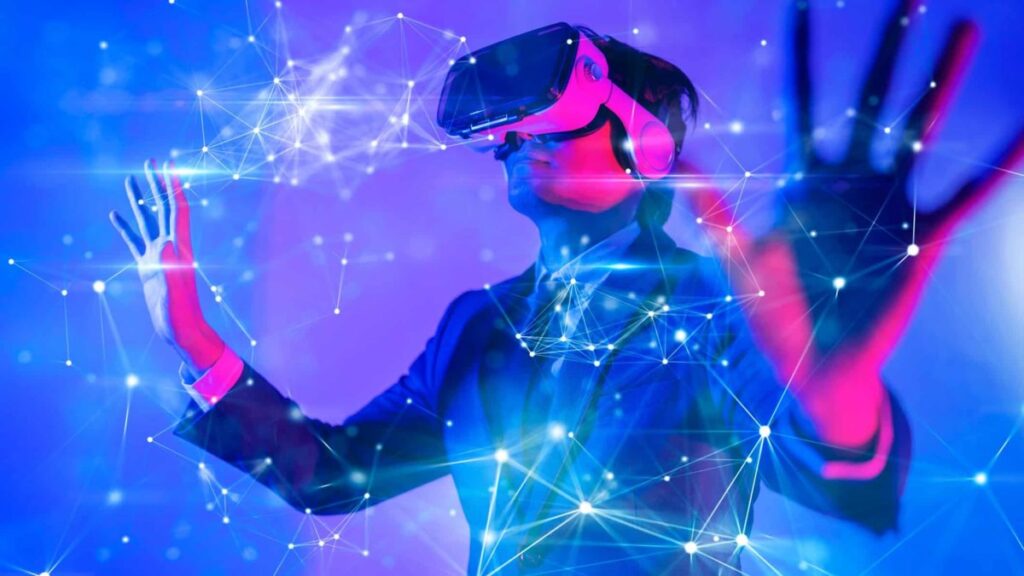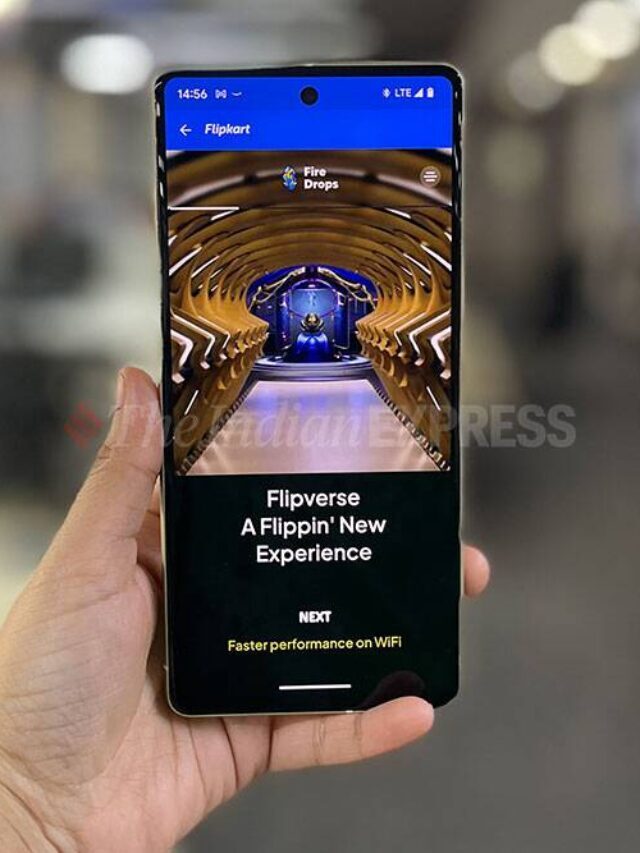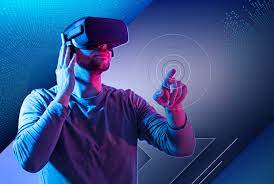Introduction:
In recent years, the term “metaverse” has gained significant attention, capturing the imagination of tech enthusiasts, entrepreneurs, and visionaries alike. Coined by Neal Stephenson in his 1992 science fiction novel “Snow Crash,” the metaverse refers to a virtual universe where people can interact with one another and digital environments in real-time. While the concept was once confined to the realm of fiction, rapid technological advancements have brought us closer to realizing this immersive digital space. In this blog, we will explore some of the diverse and exciting uses of the metaverse, which have the potential to revolutionize various aspects of our lives.

- Social Connectivity and Interaction:
One of the most promising applications of the metaverse lies in its ability to facilitate social connectivity and interaction. As our lives become increasingly digital, the metaverse offers a virtual space where people can meet, communicate, and collaborate regardless of physical distance. Imagine attending virtual concerts, conferences, or even family gatherings in immersive environments, complete with lifelike avatars and real-time interactions. The metaverse has the potential to redefine social networking, providing a new dimension to our digital interactions. - Entertainment and Gaming:
The gaming industry has long been at the forefront of virtual experiences, and the metaverse holds tremendous potential for the future of entertainment. With the metaverse, games can evolve into dynamic and persistent worlds, blurring the boundaries between reality and fiction. Players can explore vast virtual landscapes, engage in complex narratives, and interact with other players on an unprecedented scale. Moreover, the metaverse can serve as a platform for various forms of digital entertainment, including virtual reality (VR) experiences, movies, and live performances. - Education and Learning:
The metaverse offers exciting possibilities for revolutionizing education and learning. Traditional classrooms can be transformed into immersive learning environments, allowing students to explore historical landmarks, dive into scientific simulations, or collaborate on projects with peers from across the globe. The metaverse enables interactive and experiential learning, making education more engaging, inclusive, and accessible to learners of all ages and backgrounds. Additionally, virtual classrooms and training programs within the metaverse can provide a cost-effective solution for organizations to upskill their workforce. - Business and Commerce:
The metaverse presents a new frontier for business and commerce, offering innovative ways to connect with customers, showcase products, and create immersive shopping experiences. Virtual storefronts and showrooms can enable customers to explore products in a virtual space, try out virtual prototypes, and make purchases without leaving their homes. Brands can leverage the metaverse to engage with their audience in novel ways, building virtual communities, and offering unique experiences that transcend traditional marketing channels. Additionally, the metaverse can enable new forms of virtual currency, digital assets, and decentralized marketplaces. - Healthcare and Well-being:
The metaverse has the potential to revolutionize healthcare and well-being by providing virtual platforms for telemedicine, remote consultations, and mental health support. Patients can access healthcare services from the comfort of their homes, eliminating geographical barriers and improving accessibility. Moreover, the metaverse can facilitate virtual therapy sessions, meditation experiences, and wellness programs that promote mental and emotional well-being. Virtual reality can also play a crucial role in rehabilitation and physical therapy by creating immersive environments that aid in the recovery process.
The metaverse represents an exciting frontier that has the potential to transform various aspects of our lives. From social connectivity and entertainment to education, business, and healthcare, its applications are vast and diverse. As technology continues to advance, the metaverse will likely become an integral part of our digital landscape, opening up new opportunities and experiences. However, it is crucial to address ethical considerations, privacy concerns, and ensure inclusivity as we navigate.
As the concept of the metaverse gains traction and moves closer to reality, it is essential to understand the fundamental traits that define this immersive digital universe. The metaverse promises to revolutionize the way we interact, work, play, and learn in a virtual realm that transcends the boundaries of physical space. In this blog, we will explore some of the important traits that characterize the metaverse and make it a unique and transformative concept.
- Virtuality and Immersion:
At the core of the metaverse lies the concept of virtuality and immersion. Unlike traditional computer interfaces or video games, the metaverse offers a fully immersive experience, where users can engage with digital environments and interact with others as if they were physically present. Through technologies such as virtual reality (VR) and augmented reality (AR), users can feel a sense of presence and explore virtual worlds with a high level of realism, blurring the line between the physical and digital realms. - Persistence and Continuity:
Another crucial trait of the metaverse is persistence and continuity. Unlike temporary or isolated virtual experiences, the metaverse is envisioned as a persistent digital universe that is always accessible and evolving. This means that the metaverse maintains a consistent state over time, allowing users to have ongoing experiences, build relationships, and make contributions that persist beyond individual sessions. It fosters a sense of community and enables collaborative endeavors that transcend the limitations of time and space. - Interconnectivity and Interoperability:
Interconnectivity and interoperability are vital traits that shape the metaverse. The metaverse is not a singular closed-off virtual world but a network of interconnected digital spaces and platforms. Users should be able to seamlessly transition between different virtual environments, carrying their identity, assets, and experiences across these spaces. Interoperability ensures that various technologies, platforms, and applications can communicate and interact with each other, creating a unified metaverse experience. - User-Centricity and Customization:
The metaverse puts users at the center of the experience, allowing them to personalize and customize their virtual presence. Users have the freedom to create and control their avatars, appearances, and identities, reflecting their individuality and preferences. This trait empowers users to express themselves, explore different personas, and engage with the metaverse in a way that resonates with their unique desires and aspirations. - Social Interaction and Collaboration:
One of the most compelling aspects of the metaverse is its potential for social interaction and collaboration. The metaverse enables users to connect with others, form communities, and engage in real-time interactions. Users can communicate, collaborate, and share experiences with people from diverse backgrounds and geographical locations, fostering a sense of global connectedness. This social aspect of the metaverse opens up opportunities for teamwork, co-creation, and collective problem-solving across borders. - Creativity and User-Generated Content:
The metaverse empowers users to be active creators and contributors rather than passive consumers. Users can generate and share their own content, whether it’s virtual objects, environments, or experiences. This trait encourages creativity, innovation, and entrepreneurship within the metaverse ecosystem. User-generated content adds richness and variety to the metaverse, enhancing its appeal and ensuring a constantly evolving and dynamic virtual universe.
Conclusion:
As the metaverse continues to evolve, these key traits will shape its development and determine its impact on various aspects of our lives. The metaverse’s virtuality, persistence, interconnectivity, user-centricity, social interaction, and creative potential are set to redefine how we experience and engage with digital environments. While we explore the potential of the metaverse, it is important to address challenges related to privacy, security, inclusivity, and ethical considerations. By embracing these traits and addressing
associated concerns, we can collectively shape a metaverse that enriches our lives and unlocks new possibilities for human interaction and innovation.


